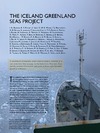Please use this identifier to cite or link to this item:
https://accedacris.ulpgc.es/jspui/handle/10553/72324
| Title: | The Iceland Greenland seas project | Authors: | Renfrew, A. Pickart, R. S. Våge, K. Moore, G. W.K. Bracegirdle, T. J. Elvidge, A. D. Jeansson, E. Lachlan-Cope, T. McRaven, L. T. Papritz, L. Reuder, J. Sodemann, H. Terpstra, A. Waterman, S. Valdimarsson, H. Weiss, A. Almansi, M. Bahr, F. Brakstad, A. Barrell, C. Brooke, J. K. Brooks, B. J. Brooks, I. M. Brooks, M. E. Bruvik, E. M. Duscha, C. Fer, I. Golid, H. M. Hallerstig, M. Hessevik, I. Huang, J. Houghton, L. Jónsson, S. Jonassen, M. Jackson, K. Kvalsund, K. Kolstad, E. W. Konstali, K. Kristiansen, J. Ladkin, R. Lin, P. MacRander, A. Mitchell, A. Olafsson, H. Pacini, A. Payne, C. Palmason, B. Pérez Hernández, María Dolores Peterson, A. K. Petersen, G. N. Pisareva, M. N. Pope, J. O. Seidl, A. Semper, S. Sergeev, D. Skjelsvik, S. Søiland, H. Smith, D. Spall, M. A. Spengler, T. Touzeau, A. Tupper, G. Weng, Y. Williams, K. D. Yang, X. Zhou, S. |
UNESCO Clasification: | 2510 Oceanografía | Issue Date: | 2019 | Journal: | Bulletin of the American Meteorological Society | Abstract: | The Iceland Greenland Seas Project (IGP) is a coordinated atmosphere–ocean research program investigating climate processes in the source region of the densest waters of the Atlantic meridional overturning circulation. During February and March 2018, a field campaign was executed over the Iceland and southern Greenland Seas that utilized a range of observing platforms to investigate critical processes in the region, including a research vessel, a research aircraft, moorings, sea gliders, floats, and a meteorological buoy. A remarkable feature of the field campaign was the highly coordinated deployment of the observing platforms, whereby the research vessel and aircraft tracks were planned in concert to allow simultaneous sampling of the atmosphere, the ocean, and their interactions. This joint planning was supported by tailor-made convection-permitting weather forecasts and novel diagnostics from an ensemble prediction system. The scientific aims of the IGP are to characterize the atmospheric forcing and the ocean response of coupled processes; in particular, cold-air outbreaks in the vicinity of the marginal ice zone and their triggering of oceanic heat loss, and the role of freshwater in the generation of dense water masses. The campaign observed the life cycle of a long-lasting cold-air outbreak over the Iceland Sea and the development of a cold-air outbreak over the Greenland Sea. Repeated profiling revealed the immediate impact on the ocean, while a comprehensive hydrographic survey provided a rare picture of these subpolar seas in winter. A joint atmosphere–ocean approach is also being used in the analysis phase, with coupled observational analysis and coordinated numerical modeling activities underway. | URI: | https://accedacris.ulpgc.es/handle/10553/72324 | ISSN: | 1520-0477 | DOI: | 10.1175/BAMS-D-18-0217.1 | Source: | Bulletin of the American Meteorological Society [ISSN 1520-0477], septiembre, 1796-1817 (2019) |
| Appears in Collections: | Artículos |
SCOPUSTM
Citations
28
checked on Jun 8, 2025
WEB OF SCIENCETM
Citations
28
checked on Jun 8, 2025
Page view(s)
166
checked on Mar 1, 2025
Download(s)
170
checked on Mar 1, 2025
Google ScholarTM
Check
Altmetric
Share
Export metadata
Items in accedaCRIS are protected by copyright, with all rights reserved, unless otherwise indicated.
